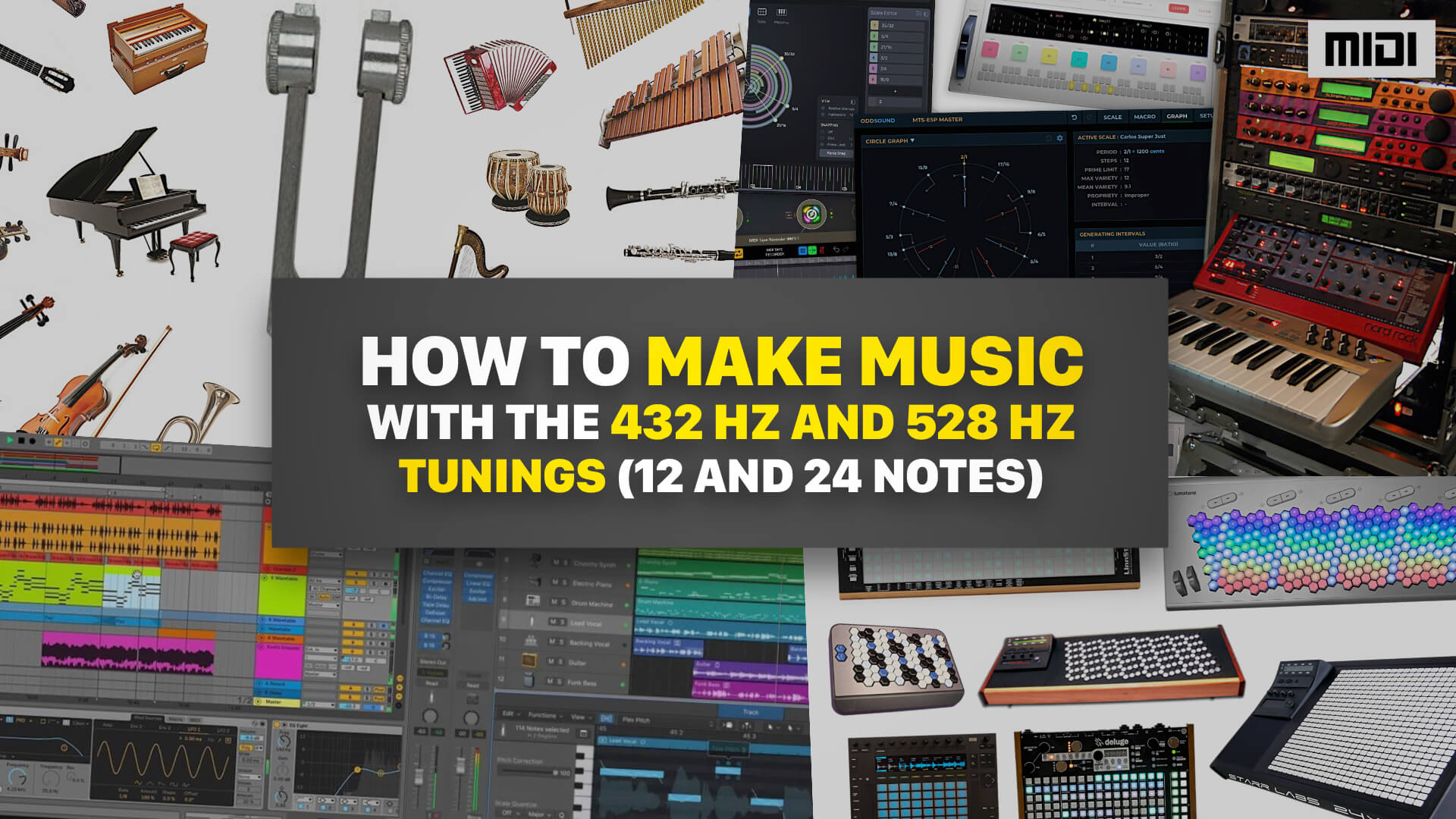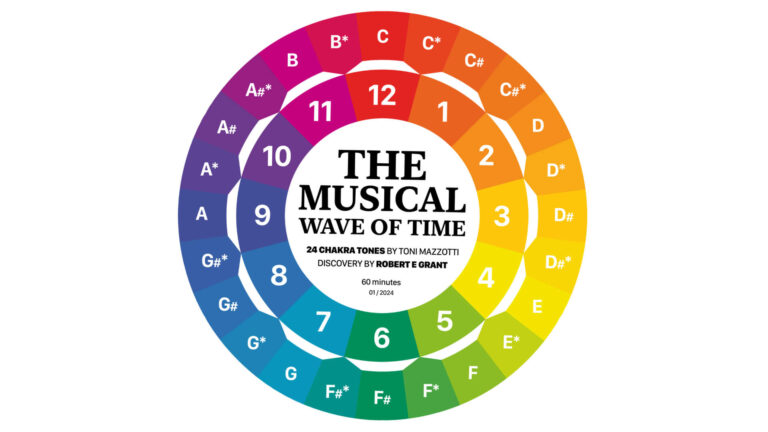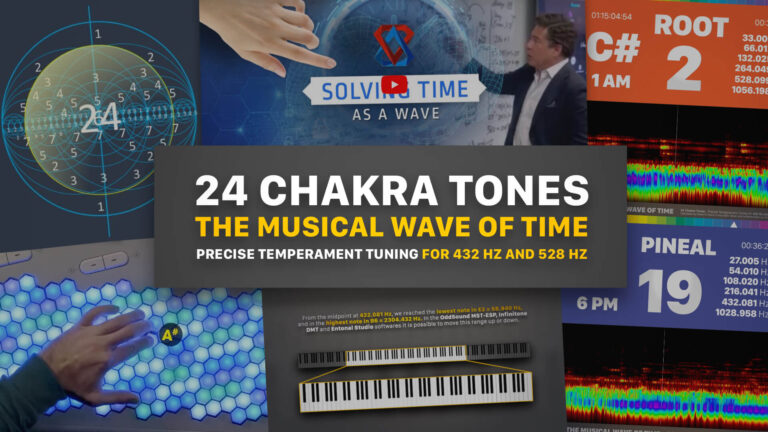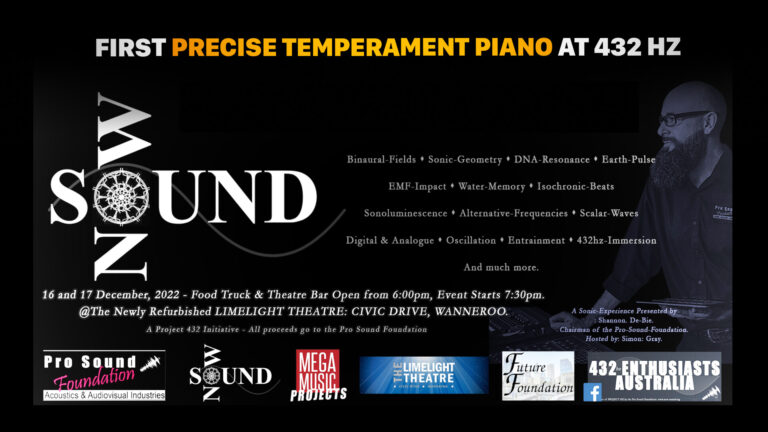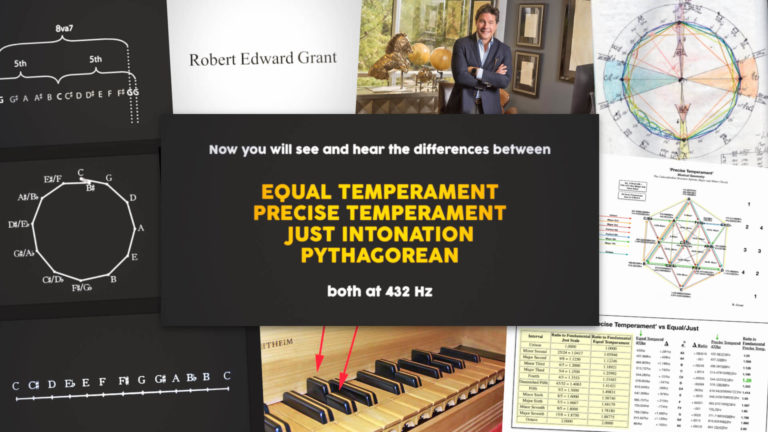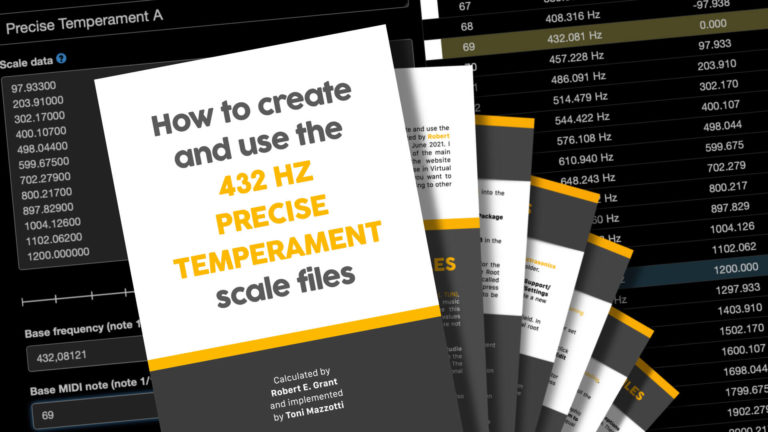To make the most of the 432 Hz and 528 Hz tunings, you need to adjust the Standard Pitch (A4 note), but also inform the frequencies of the other musical notes, through Temperament. This can be done in a few ways and depends on whether the instrument is acoustic or virtual.
TUNING ACOUSTIC INSTRUMENTS
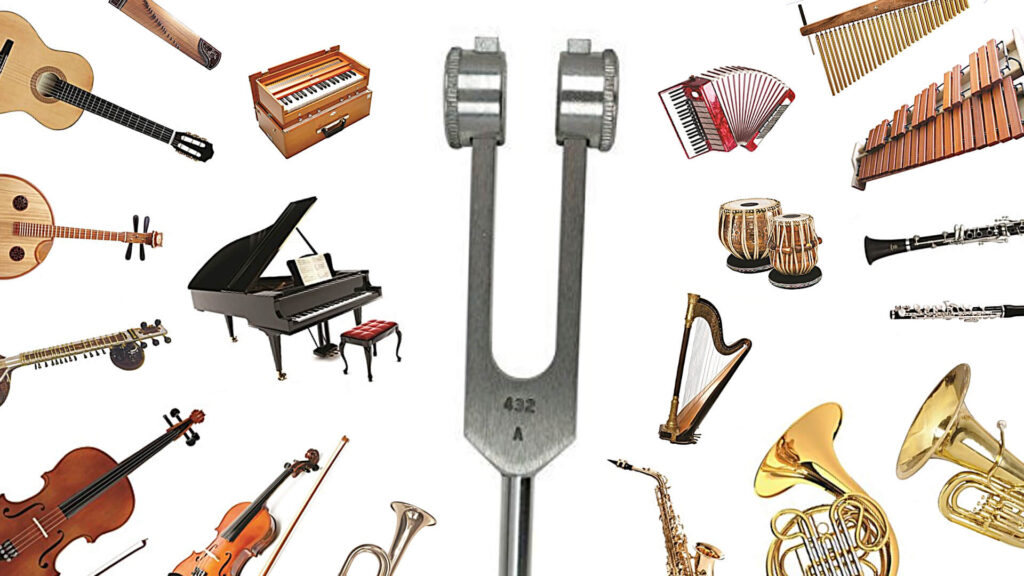
Both in the universe of acoustic and software instruments, most can change the Standard Pitch, but not so many can change the Temperament.
Guitar, Lute, Mandolin, Electric Bass and other string instruments with frets, can only change the Standard Pitch, but not the Temperament. Because most of the notes are defined by the fixed distance of the frets. Adjustable microtonal guitars, on the other hand, can change both the Standard Pitch and the Temperament.
Instruments that have individual string per note, such as Hasps, Pianos and some Electric Pianos like Fender Rhodes, can change both the Standard Pitch and Temperament.
Clarinet, Flute and Tuba are examples of instruments with limited Standard Pitch change, and without the ability to change Temperament. Pipe Organ, Marimba, Vibrafone, Xilofone, Glockenspiel, Didgeridoo, Hangdrum and Ocarina are some examples of instruments where it is not possible to change either the Standard Pitch or the Temperament. Because the configuration of the tuning of these instruments is defined in their construction.
The human voice, as well as violin, cello, viola and double bass, are examples of non-tempered instruments and therefore can change the intonation in real time. In the case of the string quartet, the instruments do not have the frets that would delimit the notes.
POLYPHONIC AUDIO RETUNING
However, for any acoustic or virtual instrument, including polyphonic ones such as guitars and pianos, it is possible to change the Standard Pitch and the Temperament after audio recording, using Melodyne software.
TUNING MUSIC SOFTWARES
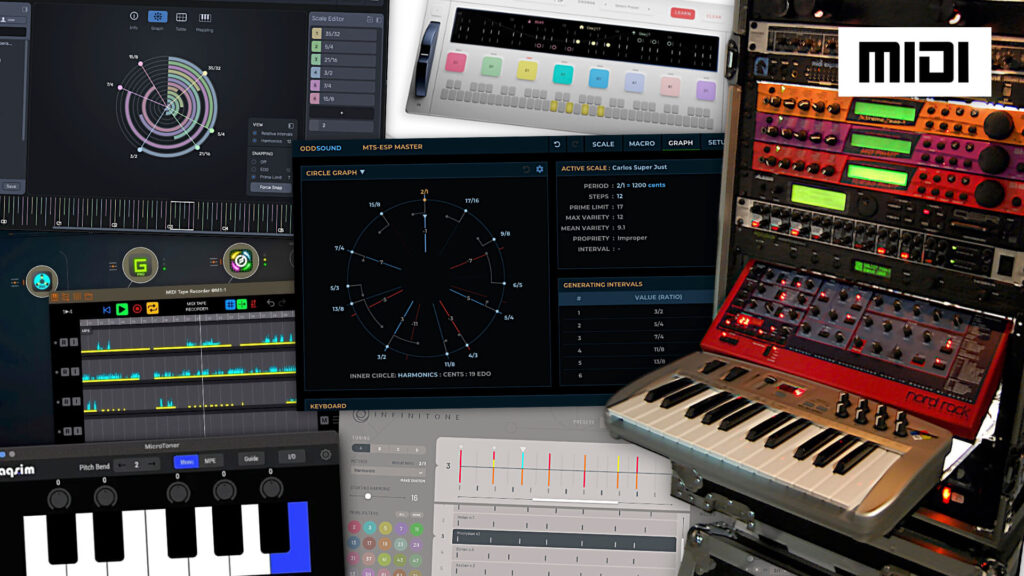
There are basically 3 types of music softwares that can be tuned: DAWs (Digital Audio Workstations), Software Instruments and Hardware Synthesizer Operating System. And there are 5 ways to tune this music softwares: Tuning Files, MPE, MTS and In The Interface.
1) TUNING FILES
The first way is through the creation and loading of Tuning files. The 3 most common types are SCL (with KBM files sometimes), TUN v2 and Kontakt Script. They are simple blocks of text and the format considered standard is the SCL. This method is considered the most accurate along with the MTS (MIDI Tuning Standard) messages. See file types descriptions here.
2) MPE
The second way to tune is by intercepting and manipulating the Pitch Bend of each note, through a recent technology MPE (MIDI Polyphonic Expression). It is considered the most compatible because even old (and even monophonic) instruments respond to Pitch Bend. The manipulation can be done directly in the interface of MIDI plugins, such as MicroToner and Fluid Pitch, which offer a little less precision. Most software that uses MPE, accepts or even requires the loading of tuning files. Here is a list of products that already adopt MPE:
> Apple Logic Pro through MIDI Mono Mode
> Steinberg Cubase through Note Expression
> Bitwig through per-note automation and configuration scripts
> ROLI Seaboard through per-note MIDI
> LinnStrument through Channel Per Note output
> Haken Continuum through Polyphonic Channel Assignment
> Eigenlabs Eigenharp through its Poly MIDI Routing Matrix
> Geo Synthesizer through MIDI Channel Span
> U-he Diva, Bazille, ACE listen to controllers for each MIDI channel independently
> PPG WaveGenerator and WaveMapper through Voice Per Channel Mode
> Spectrasonic Omnisphere, Keyscape and Trilian through Clone Part feature
3) MTS
The third method of tuning software is via MIDI Tuning Standard (MTS) messages. This are the best way because it tunes all instruments globally, in real time and with great precision (like Tuning Files). The company ODDSound created the MTS-ESP protocol, which has the same name as its tuning software, and which is being gradually implemented in software instruments and DAWs.
INFINITONE DMT is a dynamic microtuning software that accepts tuning files and uses both the MTS protocol and MPE tuning via Pitch Bend. ENTONAL STUDIO is another option for dynamic microtuning, which also loads and creates tuning files, as well as can operate both through MTS and MPE.
4) SYSEX
MIDI SysEx Messages are part of the MIDI standard that allows synth manufacturers to define their own specific message formats, being different for each brand and even hardware model. SysEx transmits and receives tuning messages, preset backup and firmware update, for example. And some equipment from the beginning of the MIDI era depended entirely on it for parameter edits.
The MIDI Tuning Standard (MTS) is a set of SysEx to set fine tuning of each MIDI note number. You can put MTS messages into a MIDI file along with notes. Learn more in MIDI.org forum.
5) IN THE INTERFACE
Some software, such as Kontakt and SWAM instruments, the MIDI plugins Fluid Pitch and MicroToner and the DAW Logic Pro, allow or require the insertion of micro tuning values directly into their interfaces. These values, in cents, refer only to deviations from equal temperament and do not include the Standard Pitch, which needs to be adjusted separately.
TUNING DAWs
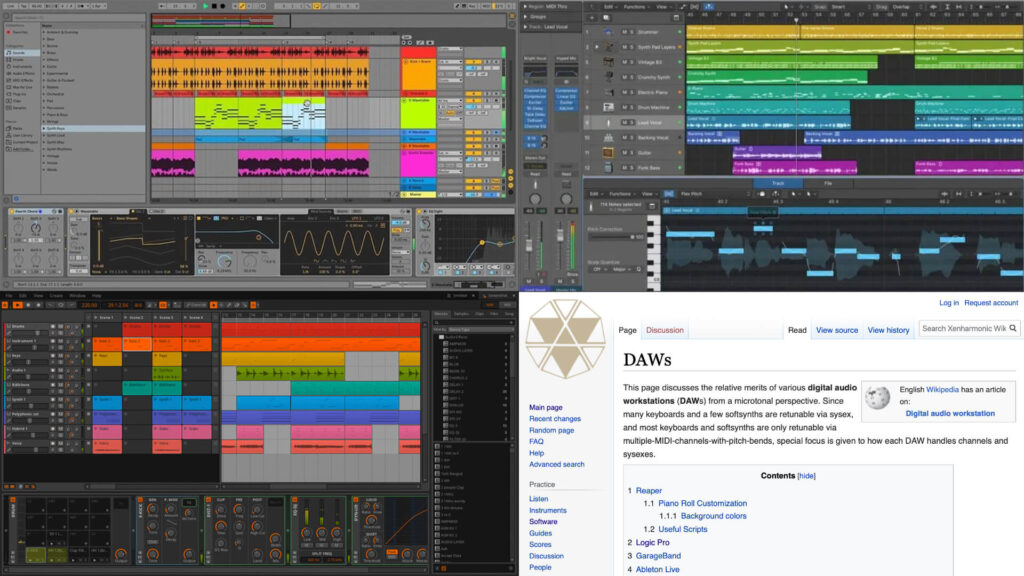
Listed below are 3 of the most popular DAWs (Digital Audio Workstations) on the microtonal scene. Logic Pro was the first to implement these functions, but it has been many years since it updated them. Bitwig Studio was the first to support MPE but has accuracy limitations in its Micro-pitch plugin. And the most powerful one for microtonal production today is Ableton Live, because of your new global Microtuner plugin.
ABLETON LIVE
Ableton Live 11.1 and above works with SCL tuning files and its internal instruments are MPE compatible. But the Microtuner plug-in does not behave correctly with scales with more than 12 notes. For use the 12-note scale in 432 Hz on the Microtuner plugin:
1) Keep the MPE button ON
2) Keep the PITCH BEND at 48
3) In BASE FREQ write: 257.00 (or XXX for 528.081 Hz scale – this info will be updated in few days)
4) Enable MPE on the compatible software instrument like Serum or Pigments.
5) Set the Pitch Bend to 48
6) Keep the Standard Pitch at 440 Hz, because the tuning changes already happen in the Microtuner plugin, and if the instruments also change this base frequency, this result will be summed.
If you are using multiple instances of Microtuner plugin, you can synchronize tunings between instruments with the Lead and Follow modes of the device or by connecting it to an MTS-ESP client plug-in.
Multi-channel plug-ins that aren’t explicitly MPE compatible, such as Omnisphere and Kontakt, may still be played with polyphonic expression in MPE Mode.
1) Right-click in the header of the device and select ENABLE MPE MODE
2) Right-click in the header again and select MPE CHANNEL SETTINGS
3) For Multi-channel Mode, select MULTI-CHANNEL. For First Note Channel, select CHANNEL 1, and for Last Note Channel, In the case of Omnisphere, select CHANNEL 8. Or another number of channels for Kontakt, where you must duplicate the instrument to receive the amount of MIDI channels you have chosen.
4) Right-click on the device header and select SAVE AS DEFAULT CONFIGURATION.
LOGIC PRO
Most of Logic Pro’s internal instruments are compatible with MPE. But only scales of up to 12 notes per octave works. The scale of 24 notes did not open and an error message was shown. To use the scales in Logic Pro right-click on the application and select “Show Package Content”. Place the 3 Precise Temperament Tuning files, in SCL format, inside the folder: Content/Resources/Tuning Tables. Then close and reload Logic Pro.
The SCL format does not contain the Standard Pitch internally and therefore you need to insert it into the interface. The problem with the microtonal implementation of Logic Pro is that for each different root note, you will need to enter a slightly different value in the TUNE slider. These are the values to use each root note, keeping the A4 always at 432.081 Hz or 528.099 Hz:
| Note | 432 Hz | 528 Hz |
| A | -31,44 | 21,05 |
| A# | -35,52 | 19,73 |
| B | -35,57 | 18,00 |
| C | -29,29 | 15,95 |
| C# | -31,67 | 21,61 |
| D | -33,73 | 19,88 |
| D# | -31,13 | 17,80 |
| E | -29,50 | 25,21 |
| F | -31,55 | 21,70 |
| F# | -33,60 | 19,98 |
| G | -35,35 | 18,87 |
| G# | -29,38 | 23,55 |
IMPORTANT: The tuning done in Logic Pro affects only the internal instruments. You can confirm the frequencies with the Logic Pro Test Oscillator instrument, along with the QWERTY keyboard, activated by the Command+K shortcut, or any MIDI controller connected.
BITWIG STUDIO
Bitwig Studio only accepts SCL tuning files, and its internal instruments are MPE compatible. The 24-note scale didn’t work. The error message says: “Only scales with 12 or 7 notes are supported”. Other 2 problems with the Micropitch plugin are: First, its low precision, where it is only possible to change the frequency of the Standard Pitch in whole numbers, without decimals. And second, his inability to work with multitimbral instruments like Omnisphere and kontakt. Working only in MPE mode.
LIST OF MICROTONAL DAWS
My conclusion after these tests with some of the best DAWs that have implemented microtonal features, is that it is easier and accurate to adjust the software instruments (third-party) directly with tuning files, or by using dedicated software, such as MTS-ESP, Infinitone DMT or Entonal Studio, via MTS or MPE.
Plugins such as MicroToner, Fluid Chords, Infinitone DMT and Entonal Studio also work as warpers plugins, loading the software instruments inside them. This is useful for DAWs that do not accept MIDI plugins. And, in this way, it is possible to play polyphonically even monophonic software instruments that do not accept tuning files.
In most DAWs it is also possible to tune any monophonic instrument by creating multiple tracks with the same instrument and routing the MIDI signal to them, so that each note reaches each instance separately. This approach works with Infinitone DMT and Entonal Studio. See the an updated list of microtonal DAWs.
TUNING SOFTWARE INSTRUMENTS
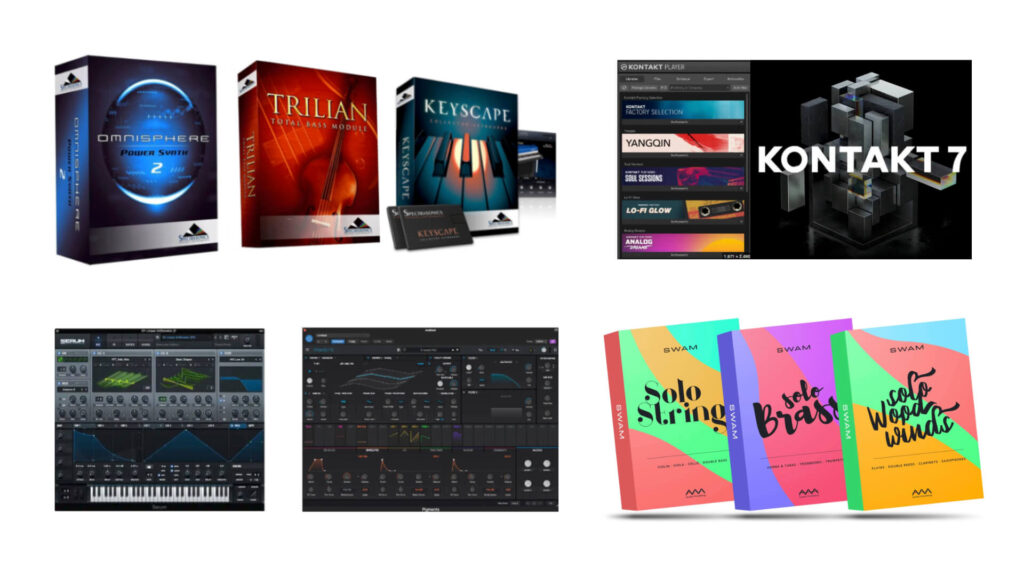
Among the market-leading software instruments I chose those that operate with at least one different tuning method, also covering the 3 most common types of tuning files: SCL, TUN and Kontakt Script.
KONTAKT
In Kontakt by Native Instruments, not all libraries support microtuning, but factory libraries do. There are two ways to micro-tune Kontakt. The first method only accepts scales of 12 notes and is less precise, so I will show only the second method, which uses tuning files of the Kontakt Script type.
1) Open the scale in any text editor and copy its content.
2) In Kontakt, click on the button with a tool icon to enter on EDIT MODE.
3) Click on the SCRIPT EDITOR button, find any tab with the title “<empty>“, click on the EDIT button and paste the copied content.
4) Press the APPLY button.
5) The Kontakt Script contains the Standard Pitch information inside and, therefore, the external parameters of the Kontakt must remain at 440 Hz.
SERUM and PIGMENTS
In the popular synthesizers in microtonal music scene Serum and Pigments, the 12-note and 24-note scales works. In Serum, which accepts TUN files, you must keep the Standard Pitch at 440 Hz, because this type of tuning file already contains this information internally. In Pigments, which accepts TUN and SCL files, only the SCL worked and, since this type of tuning file does not have the Standard Pitch information inside, it needs to be inserted into the interface. To fine tuning the frequency, click and drag holding the control, until it reaches the value of 432.1 Hz. Turn on and load the SCL file selecting A4 as REFERENCE NOTE. Both Serum and Pigments also works fine with MTS-ESP in some DAWs. In Pigments select SETTINGS and turn on the MTS-ESP Status. In Serum you don’t need to do anything to MTS-ESP works.
SPECTRASONICS
In Spectrasonics‘ Omnisphere, Keyscape and Trilian, which use TUN files, I found two problems: First, a small difference of about a tenth of a cent more on all frequencies, which can be corrected by creating a specific tuning file that compensates for the difference (see in the zip file to download a specific version of the tuning file for Spectrasonics instruments). And second, on the 24-note scale the lowest octave does not play, making C2 at 121 Hz the lowest note. I tried to create a tuning file with the root note one octave down, but the problem still persists. This problem has to do with the limitation of the MIDI 1.0 protocol, which only allows 128 musical notes. When we use a scale of 24 quarter tones per octave, we need to double the amount of total notes of a piano, that is, 88 x 2 = 176, which are 48 more than the protocol allows. This limitation can be overcome using the two 12-note scales, 432 Hz and 528 Hz, one at a time. These two scales create together the 24 quarter-tone scale called The Musical Wave of Time. See more here.
AUDIO MODELING
SWAM Instruments by Audio Modeling works only with 12-tone scales and with values typed directly into their interface.
1) On the Pitch subpage, select the Master Tuning tab and scroll the Master Tune slider at -31 cents to get A4 at 432.1 Hz, or +24 cents to get A4 at 445,0 Hz, in case of 528 Hz scale.
2) On the Micro Tuning tab, enter these values below in the graphic musical notes. Make sure that each note is activated by clicking on them to make it white. These values are rounding off deviations from Equal Temperament in cents. When you change the key musical note on the slider Root, observe the notes by changing their proportions in relation to the intervals.
| Degree | 432 Hz | 528 Hz |
| I | 0 | . |
| IIm | -2 | . |
| II | 4 | . |
| IIm | 2 | . |
| III | 0 | . |
| IV | -2 | . |
| Vm | 0 | . |
| V | 2 | . |
| VIm | 0 | . |
| VI | -2 | . |
| VIIm | 4 | . |
| VII | 2 | . |
IMPORTANT: In order for each root note change made with the slider Root take effect, click on Clear and re-enter the values. To avoid this rework, you can begin by click and hold one of the Favorites to save these values. After that, you can change the slider Root, so click on Clear and recover the saved values on the Favorite chosen.
The list of values related to the degrees in the table above referring to the 528 Hz scale will be updated in a few days.
LIST OF MICROTONAL SOFTWARE INSTRUMENTS
See a periodic updated list of microtonal software instruments. Choose the software listed as FULL KEYBOARD MICROTUNING. This means that the plugin is capable of any arbitrary tone, note or frequency in any MIDI note.
CONTROLLERS FOR PLAY 24-PTT
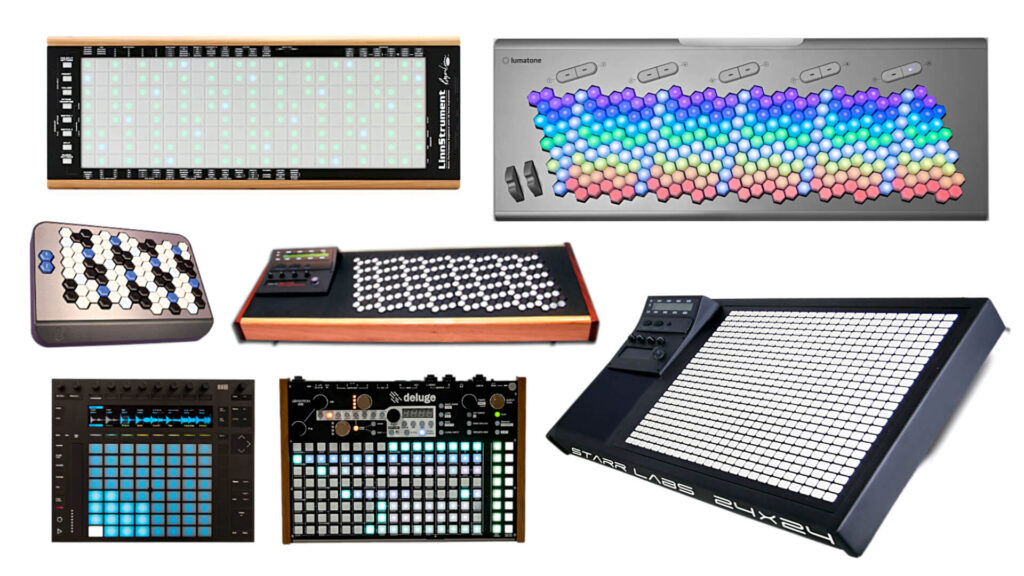
The 24-note scale is different from those we are used to and does not obey the traditional piano layout. Its 24 notes per octave result in 24 keys distributed in two octaves of the keyboard. The use of 24 quarter-tones per octave makes it difficult to perform using a conventional keyboard. But it opens up new possibilities for musical expressivity, since it allows intervals, harmonies, modulations and transpositions that are impossible on 12-tone scales.
Iso means equal and morph means shape. The concept of isomorphism in music standardizes all intervals, chords and melodies, regardless of the root tone of the construction. To play the 24 quarter tone scale, consider to use a Isomorphic MIDI controller like Lumatone, Ableton Push, LinnInstrument, ZBoard, MicroZone, Deluge or Axis 49. The Musix Pro app for iOS and the IsoKeys app for Android can control the computer’s virtual instruments via MIDI.
FREE PLUGIN AND PRESETS TO CHECK THE FREQUENCIES
To confirm the frequencies generated by the tuning methods presented here, I suggest MeldaProduction’s free MTuner audio plugin.
For greater accuracy in tuning tests, use only a pure sine wave, because it is the cleanest and most stable sound signal. I provide sine wave presets on my Share page for some of the most used virtual synthesizers in the microtonal scene: Serum, Pigments and Omnisphere.
CREDITS AND LINKD
Research and documentation by Toni Mazzotti
Musical tuning by Wikipedia
Instruments & Tuning article by Roel’s World
Precise Temperament Tunings by Robert E Grant
ScaleWorkshop web app by Sevish
ABOUT THIS CONTENT
My original intention about the content of this post was to make a series of videos and try to sell it in course format, to finance my work. But after a few weeks with this content finished, I realized that I couldn’t keep it stopped. So it is being posted in text format, which is easier to release and keep updated even. And maybe I can make videos about this content in future, demonstrating the step by step. If my work helps you, consider support-me. 🙂

